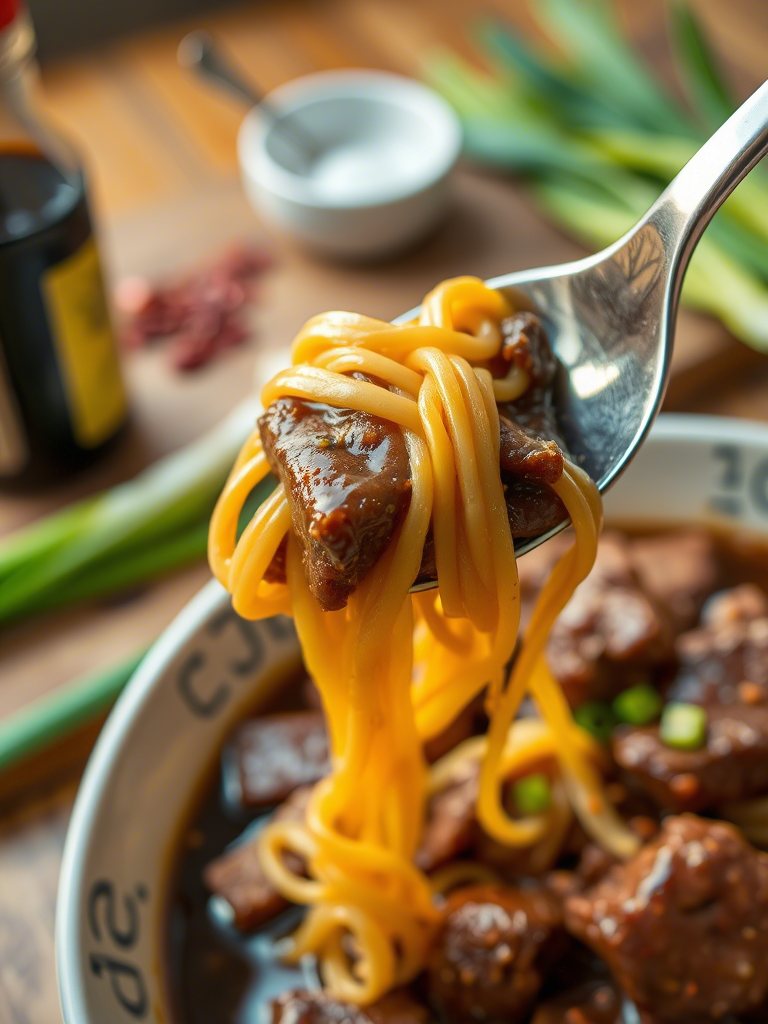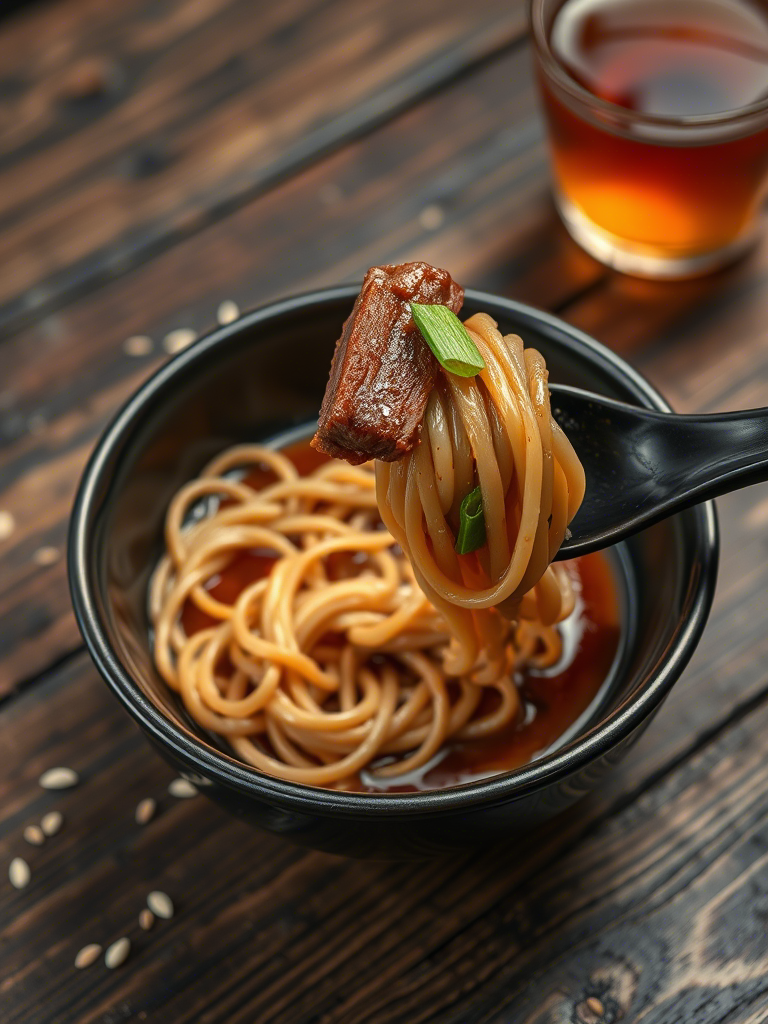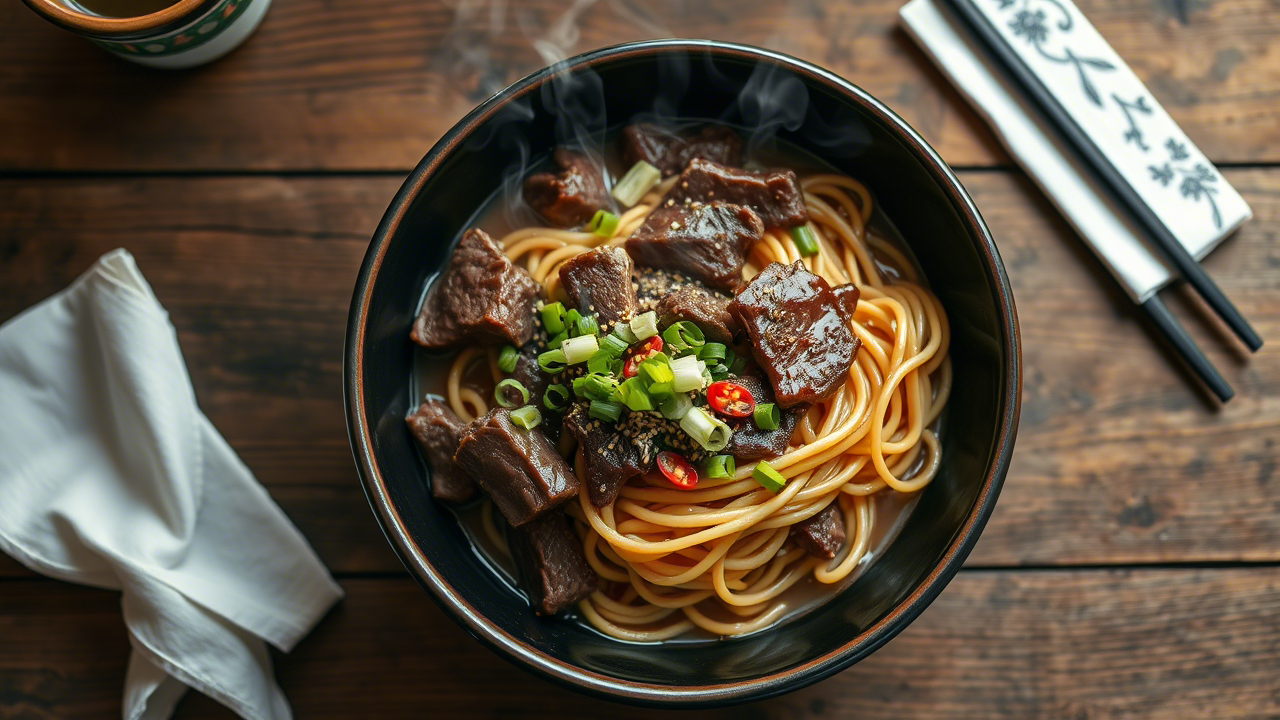There’s a good reason sticky beef noodles have quietly climbed the ranks in professional kitchens lately. It ain’t just about the glossy sheen or the pull of tender beef laced with glossy, sweet-salty sauce. It’s the wild harmony of flavor and texture—a dish that hits all the big notes without shouting about it. One forkful and suddenly it’s not just dinner—it’s drama in a bowl.
This dish walks the line between street food nostalgia and modern culinary artistry. You’ve seen it on menus from Melbourne to Manchester, from high-end gastropubs to humble hawker stalls in Bangkok. But replicating it properly? That’s the rub. Done right, sticky beef noodles are both humble and high art. Done wrong, you’re stuck with claggy noodles and meat that chews like rubber bands.
This guide dives deep. Not just how to make it. But why it works—and how to elevate it beyond the usual Tuesday night stir-fry. Whether you’re a seasoned chef, menu developer, or an obsessed home cook with a wok that’s seasoned like a cast-iron memoir, you’re in the right spot.
What Exactly Are Sticky Beef Noodles?
It’s not a traditional dish in the codified sense like Pad Thai or Lo Mein. Think of it more as a genre. A loose category of pan-fried or wok-tossed noodle dishes built around beef—usually flank, skirt, or short rib—coated in a sticky, umami-rich sauce. The sauce is often soy-based, kissed with sweetness (honey, brown sugar, hoisin), a touch of acid, and sometimes heat.
The “stickiness” doesn’t just refer to texture. It’s a flavor glue. Binding all the elements—beef, noodles, aromatics—into one tangled mass of joy.
There’s no strict rulebook, and that’s its power.
Why Chefs Love It (But Don’t Brag About It)
Sticky beef noodles rarely make the cover of glossy food magazines. But chefs return to it again and again.
It’s a profit goldmine. Beef is the star, but you don’t need prime cuts. Skirt steak sliced against the grain works beautifully. Add in noodles (low cost), a house-made sauce, and a few crisp veggies for color? You’ve got a dish that looks and eats like a million bucks.
And diners love it. Sticky beef noodles feel indulgent without the overhead of dry-aged tomahawk drama. The dish is customizable. Gluten-free tamari? Sub the noodles. Vegetarian cousin? Sub tofu or jackfruit. Still sticky, still craveable.
The Beef: More Than Just Muscle
Let’s get this straight—your choice of beef makes or breaks the dish. No sense dressing up gristly meat in caramelized sauce if it won’t bite down tender.
Professionals often reach for flank steak, skirt, or sirloin flap. All high in flavor, moderate in price, and with the right prep, cook down into something rich and velvet-soft.
Here’s the key: slice thin, slice across the grain. Always.
Marinate your beef. Don’t skip this. Even 20 minutes in a mix of soy, Shaoxing wine, and baking soda can do wonders. That soda trick? That’s what gives it that springy “velveted” texture you’ll taste in top-tier Chinese stir-fries. It changes the pH of the meat’s surface proteins, reducing toughness without breaking down structure.
Let it sit. Then blot it dry before hitting the wok. Wet beef = steam = sadness.

Sauce Breakdown: The Sticky Equation
Sticky sauce is equal parts science and art. You want balance. Salty, sweet, umami, with just enough viscosity to cling like honey to hot noodles. But not too thick—you’re not making molasses here.
Here’s a classic backbone:
- Dark soy sauce – for depth and color
- Light soy sauce – salt and brightness
- Oyster sauce – umami bomb
- Brown sugar or palm sugar – sweetness with depth
- Shaoxing wine or dry sherry – acid and aroma
- Cornstarch slurry – the thickener that binds it all
- Ginger and garlic – essential base notes
- Chili flakes or sambal – optional, but adds punch
Some chefs add a spoonful of hoisin. Others swap in miso paste or fish sauce for added funk. No single right way. Just rules worth breaking if you know the game.
Want to go pro? Infuse your oil. Flash-fry some star anise, Szechuan peppercorns, or even dried tangerine peel before starting the stir-fry. It’s subtle but deepens complexity.
Noodles: The Often-Ignored Backbone
Don’t let the noodles be an afterthought. If beef is the lead singer, the noodles are the rhythm guitar. You notice when it’s off.
Most chefs lean toward:
- Egg noodles – springy, golden, flavorful
- Udon – chewy, comforting
- Rice noodles – for a lighter, gluten-free base
- Lo mein-style wheat noodles – slurp-friendly and strong
Cook ’em just shy of done. Then shock in cold water. Drain well and toss with a touch of oil to prevent sticking.
Pro tip? If you’re wok-tossing, the noodles must be dry. Wet noodles will cool your wok and ruin your sear. No one wants limp, soggy strands stuck in a soy puddle.
Vegetables: Texture Contrast or Overload?
Veg in sticky beef noodles is more jazz than requirement. But when it’s there, it better snap.
Thin-sliced carrots, bell peppers, broccolini tips, snow peas—all work. Just keep ’em fast-cooked and crisp. You’re not making stew.
Add the veg after the beef, before the noodles. Let them kiss the hot oil. That brief sear boosts flavor and preserves structure. No mush.
Some chefs are skipping veg altogether, leaning into the minimalism trend. Letting the beef and sauce stand alone on a pillow of pure noodle joy. That’s a bold move. And it works when your sauce sings loud enough.
Technique: The Wok Factor
Wok hei. If you know, you know.
That smoky breath-of-the-wok flavor is nearly impossible to fake. But it’s the soul of sticky beef noodles.
You need:
- High heat (a real flame if possible)
- A carbon steel wok or very hot sauté pan
- Small batches – crowd the pan and you kill the magic
A good stir-fry takes maybe 90 seconds. But those 90 seconds demand full attention. No checking your phone. No turning away.
The order matters:
- Aromatics (garlic, ginger, chili)
- Beef (quick sear, remove)
- Veg (if using)
- Noodles
- Sauce
- Beef returns for final toss
That final toss? That’s where sticky becomes sublime.

Sticky Beef Noodles Around the World
Interestingly, this dish has evolved far beyond its East Asian roots.
In Kuala Lumpur, you’ll find beef hor fun with thick soy gravy and slippery wide rice noodles.
In Sydney, fusion bistros throw in lemongrass and Thai basil. Or top it with fried shallots and a soft egg.
Some British chefs are swapping out the beef for shredded brisket or oxtail, cooked low and slow. Then they reduce the braising liquid into a sticky glaze. That’s sticky beef noodles as comfort food squared.
In Los Angeles, vegan versions sub in seitan or mushroom “beef” with miso-honey glaze. The texture game is on point.
Common Mistakes and How Pros Avoid Them
1. Overcrowding the pan
Biggest rookie move. Your noodles turn into a steamed pile of sadness. Always cook in small batches.
2. Overcooked beef
It takes seconds to go from tender to tough. Sear fast, remove, and toss back in at the end.
3. Weak sauce
If your sauce tastes “meh” in the bowl, it’ll taste invisible on the noodles. Season it bold—it mellows in the wok.
4. Wet noodles
Drain them. Then drain them again. Nobody likes soggy noodles with diluted sauce.
Is It Healthy? Can Be. Or Not.
Depends how you build it.
Use lean beef, less sugar, and plenty of veg? You’ve got a high-protein, satisfying meal.
Drench it in sauce and go heavy on oil? It leans indulgent. But sometimes indulgence is the point.
Chefs are experimenting with lower-sodium soy, swapping sugar for honey or even date syrup, and adding gut-friendly fermented chili pastes.
Nutrition aside—this dish delivers emotional satisfaction. And that counts for a lot.
Where Sticky Beef Noodles Are Headed Next
We’re seeing a few trends among professionals:
- Dry-fried versions – Minimal sauce, more wok char
- Sous-vide beef – For perfect tenderness every time
- Fermented notes – Think kimchi, black garlic, or doubanjiang
- Noodle swaps – Soba, zucchini noodles, glass noodles
- Meal kits – This dish is booming in the DTC space
Expect to see sticky beef noodles dressed up for the tasting menu soon. With microgreens and a jus reduction. Mark my words.
Final Thoughts: Why This Dish Still Matters
Sticky beef noodles aren’t just a throw-together meal. They’re a canvas. For creativity. For technique. For culture.
At its core, it’s a dish that rewards balance and precision—but allows room for play. It’s humble but deep. Comforting but customizable.
And that’s why it endures. Why pros keep returning to it. Why it shows up again and again in kitchens across the world, from corner takeouts to culinary competitions.
If you make one noodle dish this month—heck, this year—make it this one. Just don’t forget to sear that beef right, dry those noodles well, and let the sauce sing sticky and proud.
Because sticky beef noodles? They don’t whisper. They roar.
FAQs
What cut of beef is best for sticky beef noodles?
Flank, skirt, or sirloin flap are ideal for tenderness and flavor when sliced thin across the grain.
Why is my beef chewy in sticky beef noodles?
It’s likely overcooked or wasn’t sliced against the grain properly.
How do I make the sauce sticky and not watery?
Use a cornstarch slurry and reduce it just enough to coat the noodles without pooling.
Can I use chicken or tofu instead of beef?
Yes, both work well—just adjust marinating time and sauce intensity accordingly.
What type of noodles should I use?
Egg noodles, lo mein, or rice noodles work great—just make sure they’re dry before stir-frying.
How do I prevent noodles from sticking together?
Toss cooked noodles with a little oil and let them cool before stir-frying.
Is this dish gluten-free?
It can be if you use rice noodles and gluten-free soy or tamari sauce.
Can I make sticky beef noodles ahead of time?
Yes, but they’re best served fresh—reheating may affect texture.
What vegetables go well in sticky beef noodles?
Bell peppers, carrots, broccolini, or snow peas all add great crunch and color.
How can I add more flavor to the dish?
Infuse your oil with aromatics like star anise or Szechuan peppercorns before stir-frying.
Why is wok heat important for this dish?
High heat gives that smoky wok hei flavor and prevents soggy results.
Can I make a healthier version of sticky beef noodles?
Use lean beef, reduce sugar, add more veggies, and stir-fry in less oil.
How spicy should the dish be?
That’s up to you—chili flakes, sambal, or fresh chilies can dial up the heat.
What makes the sauce “sticky”?
The balance of sugar, soy, and starch creates that glossy, clingy texture.
Are sticky beef noodles traditional or fusion?
They’re more of a modern fusion comfort dish with deep Asian influences.
Ask ChatGPT

Mariana is a passionate home cook who creates delicious, easy-to-follow recipes for busy people. From energizing breakfasts to satisfying dinners and indulgent desserts, her dishes are designed to fuel both your body and hustle.
When she’s not in the kitchen, she’s exploring new flavors and dreaming up her next recipe to share with the Foodie Hustle community.

